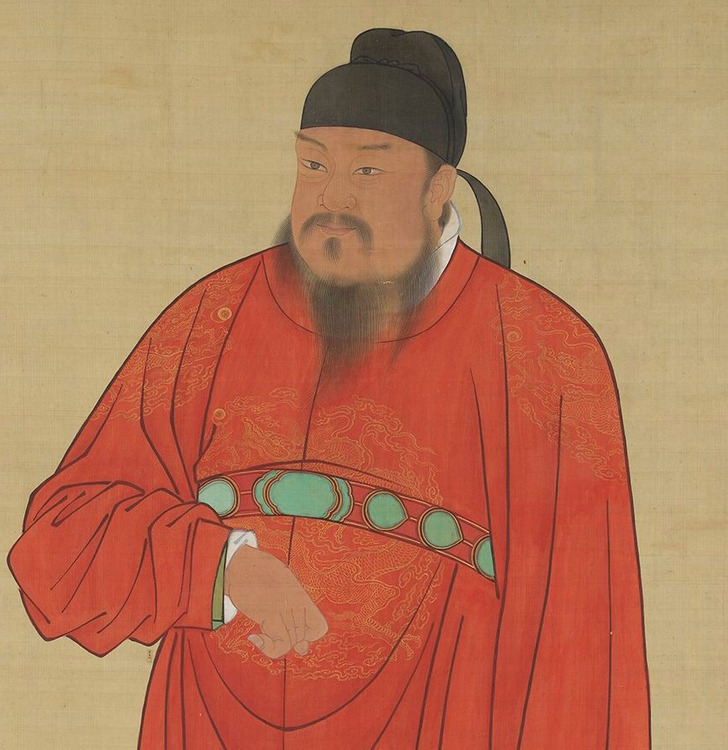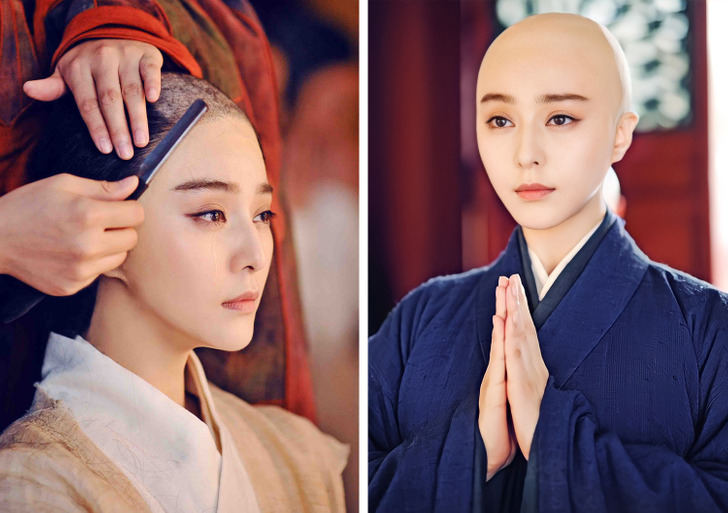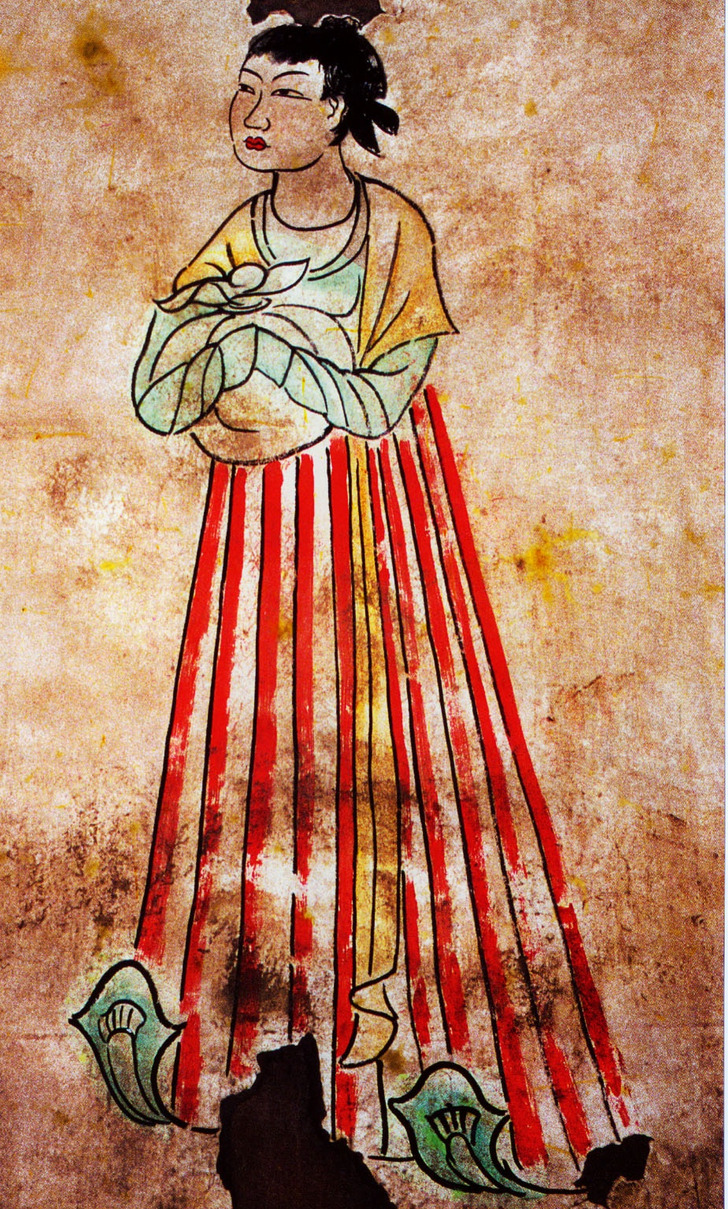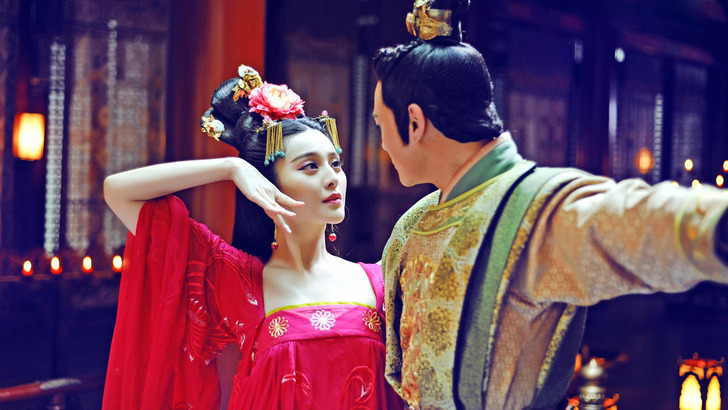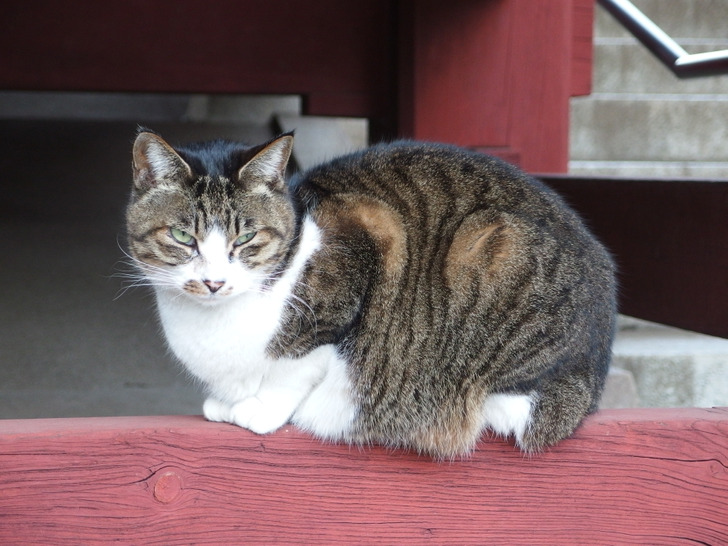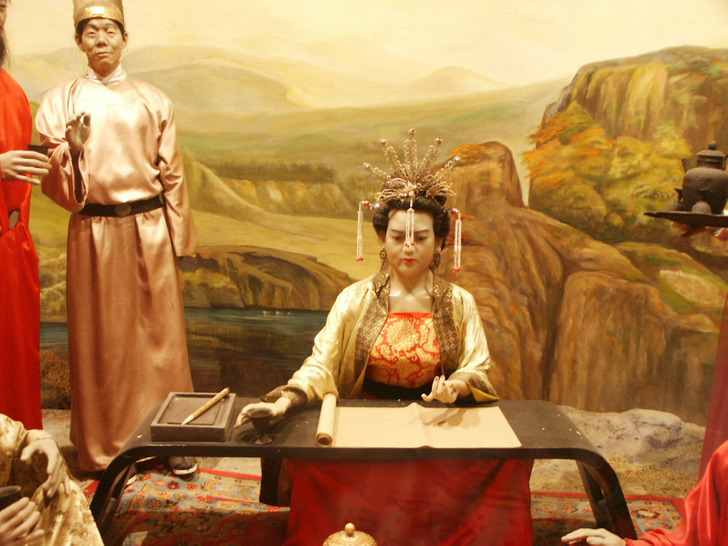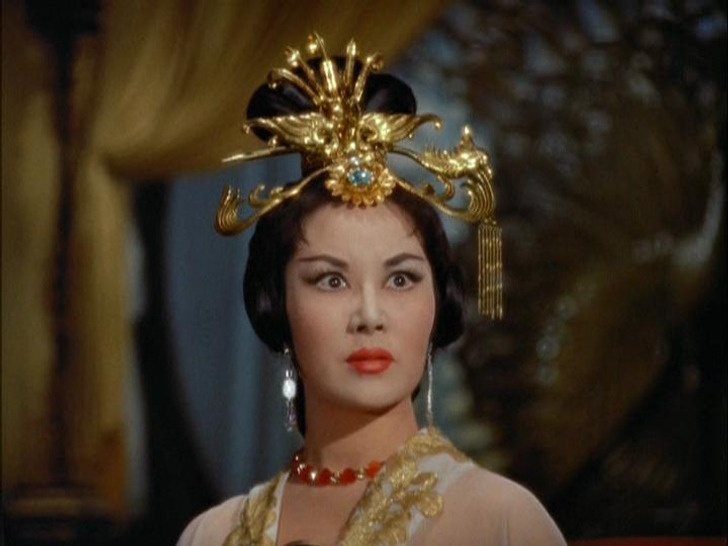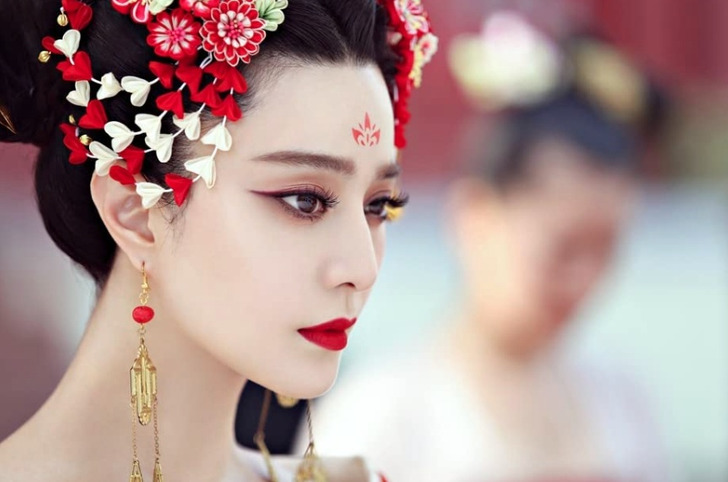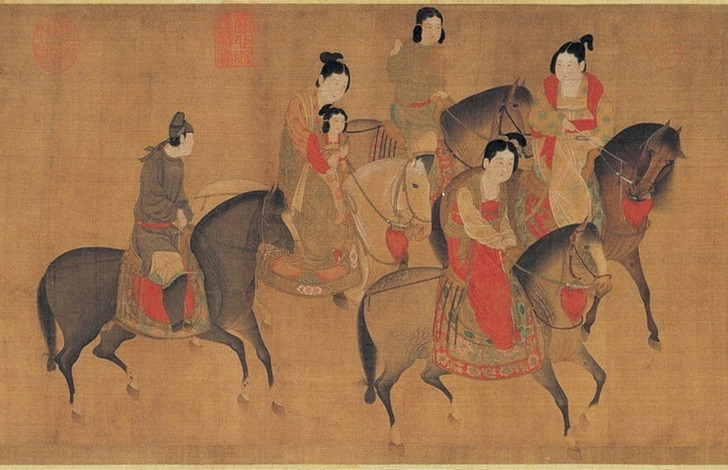The Story of the Cunning Concubine Wu Zetian Who Became Emperor and Ruled China for 50 Years
There are not so many women in history who managed to take the throne of a country. Probably many of you would just recall Cleopatra and Elizabeth I. But have you ever heard of Wu Zetian? This woman went from a concubine to an empress and ruled China for 40 years. Thanks to her efforts, China became one of the great powers of the world.
At CHEERY, we are impressed by the life of this woman and would like to tell you about how contradictory and complicated her ascending to the throne was.
How a concubine became a nun, and then an empress
Emperor Gaozu was was the founding emperor of the Tang dynasty who took away the power from the Sui dynasty.
- For many years, a noble named Gaozu was loyal to the Sui royal family that ruled China in the early 7th century. But at some point, Gaozu took advantage of the fact that the emperor’s power was weakening to seize the capital, and then the throne. After that, he founded his own Tang Dynasty and began to rule China in 618.
- One of those who helped Gaozu seize power was a lumber merchant named Wu Shihuo. To thank him, the emperor made Wu Shihuo the head of 2 important prefectures and allowed him to take a second wife from the Sui royal family.
- Wu Shihuo married this woman and she bore him 3 daughters. In the future, the middle daughter would take the emperor’s throne and will be known as Wu Zetian.
- The relationship between Wu Zetian’s family members was strained. It’s a known fact that she didn’t like her half-brothers from her father’s first wife because they were cruel toward her mother, whom she loved very much. In the future, after rising to power, she appointed them to rule distant provinces which were equal to sending them into a life-long exile.
Emperor Taizong who assumed the throne after his father, Emperor Gaozu
- In 626, Emperor Gaozu was succeeded by his son Taizong. It’s possible that he continued to communicate with Wu Shihuo’s family, due to which Wu Zetian, aged 14, became an imperial concubine.
- Her father supported young Wu Zetian in her pursuit of education and the development of intellectual skills which were traditionally reserved for males. She also studied music, and poetry and speak well in public. Therefore, she could impress the emperor not only with her beauty but also with her mind.
This was what Wu Zetian looked like in The Empress of China series, released in 2014.
- Once, Emperor Taizong asked Wu Zetian for advice on how to tame a young stallion that was so large and strong that no one could get on its back. The answer of young Wu Zetian impressed him so much that she began to work as his personal secretary, and this opportunity allowed her to continue to pursue her education.
- The probability that the concubine of such a low rank would attract the emperor was very small. At the time, Taizong was so busy that he glued official documents to the walls of his bedroom, hoping to work on them if he had to wake up in the middle of the night. He was 25 years older than Wu Zetian, although it appeared that she did have intimate relations with him at one point.
- After the death of the emperor, Wu Zetian, along with other concubines who hadn’t produced children, was sent to the Buddhist temple. According to tradition, their heads were shaved there so that they could become Buddhist nuns: they were supposed to mourn the deceased emperor for the rest of their lives.
- It was believed that a former concubine should never have a relationship with another man because this would be an insult to the dead emperor.
- But a year later, the new emperor, Gaozong, appeared in the temple. He came to honor his father’s memory and accidentally met Wu Zetian whom he knew when she lived at the palace of his father.
- Gaozong was struck by Wu Zetian’s beauty, and she was well aware of his weaknesses, so she easily charmed the young emperor. And they began to see each other often.
This is what Wu Zetian’s contemporaries dressed like: a long-sleeved shirt with a very low neckline that exposed their breasts slightly. They wore a scarf, decorated with prints or embroidery, over their shoulders. A skirt was long and had vertical stripes sewn together with 2 different colors of fabric. But there were also women who preferred to wear men’s clothing as they found it more comfortable.
- One day, Wu Zetian told him, “Even though you are the Son of Heaven, you can’t do anything about it [referring to the fact that she was confined in the temple].” Gaozong quickly replied, “I can do anything I wish.” And after that, Wu Zetian did the impossible thing — she returned to the emperor’s palace despite the rules and traditions.
- At the time, 2 women had already been competing for the attention of the emperor. Empress Wang couldn’t bear children to Gaozong, and he began to pay more attention to his favorite and the second most important woman in the empire, known as Consort Xiao. She bore him a son and 2 daughters.
- According to one version, it was Empress Wang who, trying to get rid of Xiao, advised Wu Zetian to start growing her hair shortly before meeting the emperor.
- But when she realized that the emperor’s new favorite would not serve her, Empress Wang decided to team up with her former rival Consort Xiao to get rid of Wu Zetian.
- The confrontation of women ended in tragedy: Wu Zetian lost her daughter and blamed both women for her death. The emperor took away all their titles and took them into custody, and made Wu Zetian empress. She, in turn, fearing that the emperor would change his mind and return titles and freedom to the women quickly got rid of them both.
- According to one version, Xiao cursed Wu Zetian by saying that she would be reincarnated as a cat that would take Wu Zetian’s life. Because of this, Wu Zetian was afraid of cats all her life and forbade keeping them not only in the palace but also in the capital of the empire.
- Emperor Gaozong was afraid of Wu Zetian because of her high intelligence and skills in manipulating officials, but he still declared their son the crown prince. Thanks to this, Wu Zetian gained more power as the mother of the future emperor.
- A few years later, she became the real ruler of the Celestial Empire: in 660, Gaozong suffered a severe stroke that blinded him and assigned all state affairs to his wife.
- She organized a secret service that kept her informed about everything that was happening in the country, and also appointed officials to remove any opposition to her authority. This went on for another 23 years.
How Wu Zetian became the emperor of the Celestial Empire
The wax statue of Empress Wu Zetian in the Henan Provincial Museum
- In 683, Gaozong passed away. Empress Wu Zetian’s second son ascended to the throne, but a year later, she replaced him with her youngest son because he was easier to manipulate.
- By 690, Wu Zetian had gotten rid of all political opponents, conferred upon herself the title “Holy and Divine Emperor,” and ruled the country for the next 15 years, becoming the only woman emperor in Chinese history.
- In general, she ruled the country for about half a century. She went from a concubine who could lose her life at any moment due to palace intrigues to a semi-divine being who was revered by millions even after her death.
Wu Zetian’s achievements
Wu Zetian was portrayed by actress Li Li-Hua in the movie Empress Wu Tse-Tien. The movie was entered into the 1963 Cannes Film Festival.
- One of the achievements of her reign was the policy of recruiting officials. According to Wu Zetian, honesty and moral qualities were not as important as the level of education and intellectual capabilities. Thus, she gathered talented and educated aristocrats, scientists, and military leaders around her.
- In 693, Wu Zetian wrote the two-volume Rules for Officials, and then made it part of the examination curriculum for future officials.
- During the Tang Dynasty, the country developed diplomatic relations with different countries, thanks to which China was more influential than India or the Byzantine Empire.
- Wu Zetian ordered the compilation of farming textbooks, construction of irrigation systems, reduction of taxes, and other agrarian reform measures.
- The treasury was replenished thanks to the trade opportunities of the Silk Roads. It reached its peak of influence during the Tang Dynasty. This helped the development of trade between the West and different parts of Eurasia, and the capital of the Tang Empire became the most cosmopolitan city in the world.
- Wu Zetian was so popular among common people that she is still honored today by an annual agricultural festival. And in times of flood or drought, people pray at a temple in her name.
Wall paintings in a tomb from the early 8th century depicting women of the Tang era in traditional attire
- Wu Zetian promoted arts and literature. In childhood, she studied music and literature. Later, she became a poetess and artist. She formed a group of like-minded people with whom she conducted literary classes.
- She contributed to the empowerment of women. Wu Zetian believed that the ideal ruler was one who ruled as a mother does over her children.
- Wu Zetian also believed that it was princesses who contributed to reconciling diplomatic conflicts, so she formed marriage alliances to aid her expansionist foreign policy.
Interestingly, the female images of the Tang Dynasty depicted in the popular series Empress of China (2014) are far from reality and refer to the clothing, jewelry, makeup, and hairstyles of a later time when women again became dependent on men.
- Some historians consider her an experienced and capable politician, but they admit that her methods of retaining power were often cruel. There is evidence that the Empress was ruthless toward her opponents.
- But it’s worth mentioning that male officials were deeply prejudiced against strong and ambitious women and undoubtedly exaggerated this aspect of Wu Zetian’s reign.
- Wu Zetian managed to stabilize and consolidate the Tang dynasty thanks to which the Tang period is reckoned the golden age of Chinese civilization.
How Wu Zetian became a feminist icon a thousand years before the West touched on the subject of women’s rights
- Judging by the horse-riding figurines that were found in the tombs of the Tang Dynasty, women of those times, regardless of origin, were skillful riders which reflected their empowerment compared to those women who lived before them.
- They took part in sports and cultural activities, including polo, archery, and boat race. Their bodies were changing, as was society’s attitude to their appearance which led to a rethinking of the female beauty ideal. Female figurines changed from being thin to more curvy which reflected the new environment in society.
- Women of the Tang Dynasty (both relatives of the emperor and his concubines) were allowed to participate in politics on an equal basis with men.
- Besides, they could choose their own husbands and divorce.
Artist Zhang Xuan (8th century) depicted court ladies of the Tang Dynasty during a spring outing. Later, artist Li Gonglin (12th century) recreated this painting (shown above).
- Women would play board games with men, such as the game of Go. This was a highly intellectual game that helped to develop strategic skills. At the time, these skills were believed to be so important that once a man in Tang Dynasty was hired at the imperial academy because he was good at playing Go.
- Women were skillful with swords, just like the female characters of the movie Crouching Tiger, Hidden Dragon. One of the princesses, who was a close relative of Emperor Gaozu, helped him during the revolt against the Sui dynasty: she led the cavalry and decisively defeated the Sui army. And Princess Taipin, the daughter of Wu Zetian, studied martial arts with Buddhist monks and always carried a sword with her.
- It would be unfair to say that this all took place thanks to the empress: a huge number of talented women appeared much earlier, starting from the period of the Sui dynasty. This became possible due to the fact that women got an opportunity to receive an education.
- The poets of that time praised the beauties who were open and cheerful, had a flexible mindset, and were especially good at writing poetry. They said that “though the face is good, it is difficult to last, but only talent can stay in the world.”
- Thanks to this, Wu Zetian managed to gain the men’s title and become the emperor.
- Everything changed with the fall of the Tang empire and the introduction of new orders: women were again limited in their rights and opportunities. For the next thousand years, they were never as free again, until the 20th century came, giving them new hope for a better life and the fulfillment of their ambitions.
What do you think about Wu Zitian’s story?
